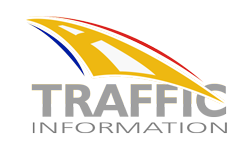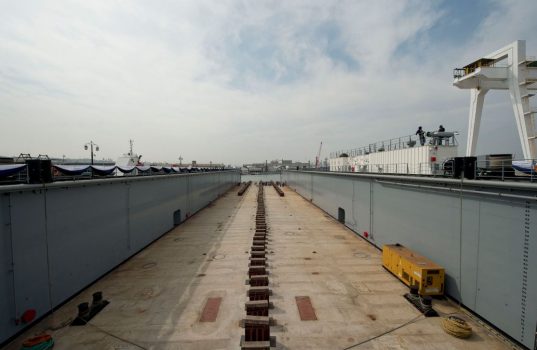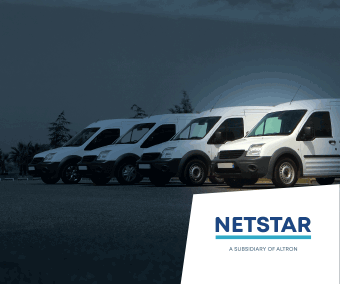New floating dock for Dormac promises great returns
Dormac Marine and Engineering, a division of Southey Holdings (Pty) Ltd and one of Africa’s largest and internationally-recognised ship repair companies, launched its new, multi-million-rand composite floating dry dock, Dormac 1, at a traditional maritime naming ceremony in Durban today.
The move, the single largest investment in Dormac’s history and signifies a new era for the company which has realised a 16-year dream to own and operate a dry dock. The R300 million investment will give the Durban and South African shipping industries a major economic boost as well as create jobs and enhance skills development.
Dormac Managing Director, Chris Sparg, said, “This asset will go a long way toward meeting the demand for ship repair in South Africa’s busiest port.”
The state-of-the-art dry dock, the first brand new ferro concrete dock to be brought into use in Africa, and the purpose built 175 meter long quay is expected to add to the Port of Durban’s ship repair capacity, taking advantage of the 30 000 ships that sail past South Africa’s coastline and the 12 000 ships that call in at South Africa’s harbours annually.
“On average, a ship is required to undergo a dry-docking every five years and the ship-repair industry requires services that are flexible, efficient and considers outside influences such as cargo availability, charter pressures and the weather.”
“Up until now, Dormac has been turning away between four and seven ships every month due to the lack of ship repair facilities,” Sparg continues, “but the new dock vastly increases Dormac’s docking capacity and flexibility and will enhance the existing Port docking offering.”
Sparg forecasts executing an additional 45 dockings per year – ‘a very significant capacity increase’. The dock is ready for operation and already has six docking orders lined up for September.
In addition, Sparg said, “Dormac Dock 1 ‘dovetails perfectly’ with the government’s Operation Phakisa, a presidential initiative that seeks to leverage the capacity of the South African maritime industry by accelerating national marine efforts, developing infrastructure and enhancing workflows.”
Besides adding to Dormac’s bottom line, the new floating dock, which requires a ready supply of skilled labour, will create an additional 80 new direct jobs with spin offs to Dormac’s business partners who will also create additional jobs.
Guest of Honour and keynote speaker, Minister of Trade and Industry, Rob Davies, used the launch as the opportunity to announce that Dormac had been awarded the DTI’s Section 12i Income Tax Allowance Incentive for this project. Section 12i is part of the Department’s incentive programme to support Investment in Manufacturing Assets, to improve the productivity of the South African manufacturing sector and the training of personnel to improve labour productivity and the skills of the labour force.
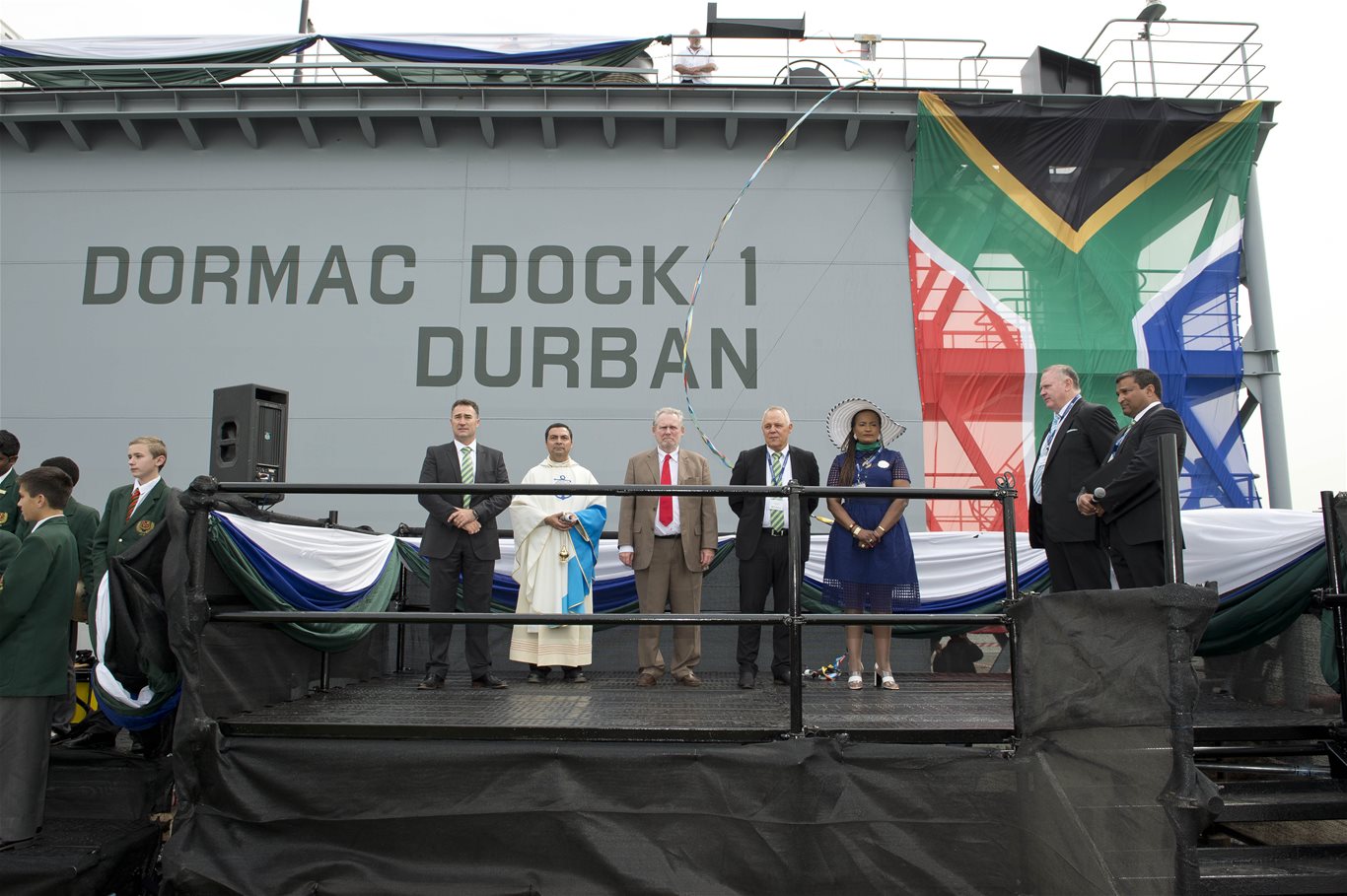
Addressing the economic impact of the new dry dock, Southey Group CEO, Barry Wickens said, “this investment is the largest single investment ever undertaken by our Group and is a sign of our faith and confidence in the future growth and development of the Durban Port and indeed, in the economy of South Africa.”
“At a time when the World economy is not in great shape and the South African economy is currently experiencing a zero percent growth rate, the Dormac Management team has undertaken this massive R300m investment, which will generate many additional jobs in the Port, enhance the skill levels of our workforce as well as generating substantial foreign currency for the Country.”
“The Southey Group currently employs 5500 people and we are looking to create hundreds of both direct and indirect jobs as a consequence of this investment. This investment is budgeted to attract substantial docking opportunities for the Port of Durban and to grow the market share for the South African ship repair industry.”
Allianz Global Corporate & Specialty (AGCS) Africa insured the floating dock during the building phase and while it was being transported to South Africa. The insurance coverage will continue while it is at the Durban Harbor’s the newly constructed shipyard.
“As a leading global insurer, AGCS is pleased to contribute towards the development of the marine and shipping industry in South Africa through our partnership with Dormac on this strategic project. The development is critical to the region’s ocean economy,” said Mark Govender: AGCS Africa Technical Underwriting Manager: Marine. “This latest delivery in Durban is a critical infrastructural component in support of this initiative. AGCS Africa engaged with Dormac directly from the outset of this project utilizing our global network of experts to fully understand the project needs, so we are able to offer much needed technical expertise and support.”
Dormac also introduced its Apprenticeship and Learnership Class of 2016 at the naming ceremony, a group of 33 artisans, many of whom will work on the new dock.
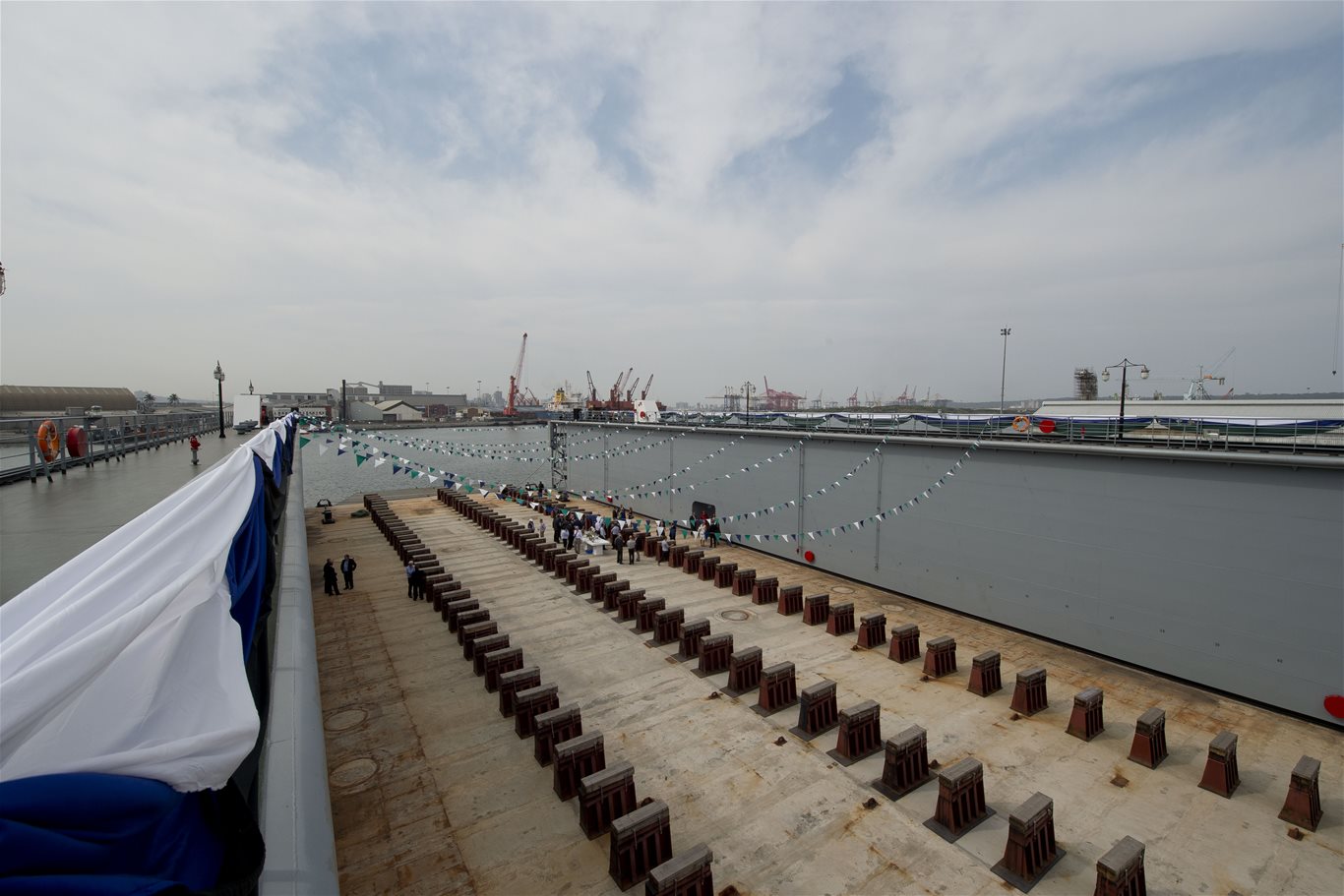
When deciding to resurrect its new building capability in 2006, Dormac was faced with a massive shortage of welding skills and it became imperative that the company embark on an intensive skill development programme.
Financial director, Craig Samuels, said, “looking at this year’s ‘bumper apprenticeship crop’, it is hard to believe that we started our training programmes back in 2002 with the enrolment of only four fitter apprentices that enrolled onto the traditional three-year curriculum for artisan training.”
Dormac’s award-winning Artisan Training Programme has already trained 770 artisans in less than 10 years and has won the company a number of awards. The programme will now include dry docking skills and bring in an extra 25 candidates per year. The recruitment process is already well under way and the new apprentices were also introduced at the naming ceremony.
Sparg is bullish about the success of this project and maintains the company is well-positioned to compete in the international market. “We see ourselves as a world-class shipyard and believe that if you operate this business correctly, you will bring the market.”
About Dormac:
A division of Southey Holdings (PTY) Ltd, Dormac is a leading engineering company specialising in the delivery of full turnkey solutions to clients in the marine, offshore and industrial industries. Dormac has five Southern African branches in Durban, Richards Bay, Cape Town, Saldanha Bay and Walvis Bay (Namibia). Its main activities are the repair, maintenance and conversion of all types of marine vessels at any one of these locations or, anywhere else in Africa, through the offering of either their Riding Squad or Shipyard-in-a-Box services.
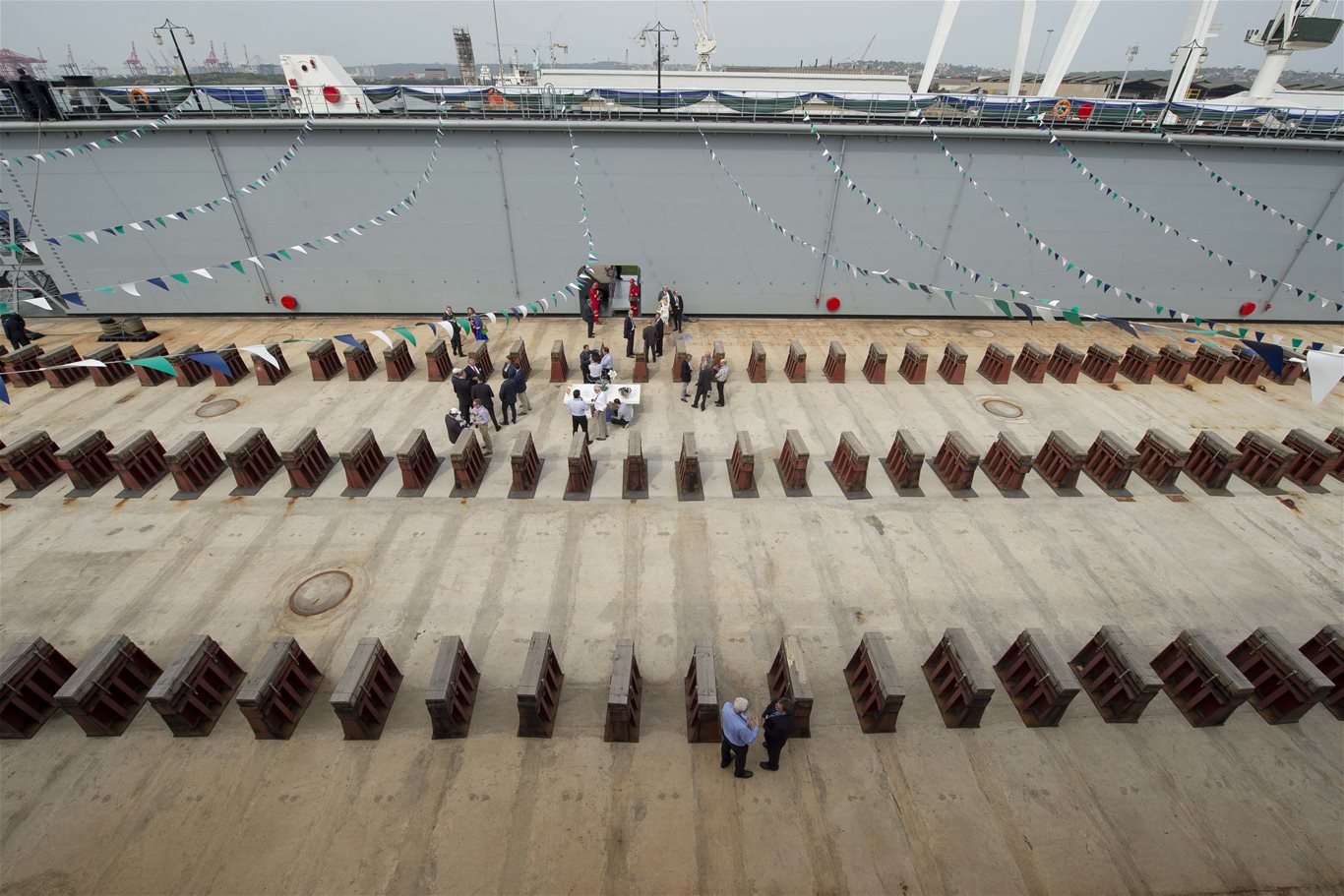
FACTS AND FIGURES ABOUT DORMAC 1 & THE NEW QUAY
THE FLOATING DOCK (DOCK 1)
- Dormac 1 was built by Ukraine-based company, Pallada
- Dormac 1 travelled from the Ukraine for 17 days and 8800 miles under tow to the tug Fairplay 33
- Dormac 1 boasts the following:
- Two 7,5-ton dock portal cranes
- Two high voltage transformers
- Four ballast electric pumps
- Two fire service electric pumps
- Six capstans each with a traction force of 8 tons
- The dock is 155m long and has a ferro concrete pontoon measuring 139,5m x 32,4m with steel wing walls
- The dock has a lifting capacity of 8500 tons and total submersion depth of 11,8m
- 176 piles were constructed and 130 000m² (13 000 truckloads) of soil was excavated to accommodate the dock alongside a brand new quayside.
- The new quayside gives 12,3m of water depth for the submersion of the dock, is almost six storeys deep and consists of over 212 piles.
- Each pile extends 22m deep, taking over seven cement trucks to fill one pile – that’s 1,484 cement trucks
- The dock is permanently attached by two 32m pylons
- The dock will be equipped with two brand new dock cranes with a capacity of 7.5 tons – the highest loading cranes found on these docks regionally.
- The project took nine months to complete
- Dormac 1 is the first brand new ferroconcrete dock to be brought into use in Africa and the only facility of its kind in South Africa
THE QUAY
- The 175m long, purpose-built deep-water quay that has been specifically designed for the attachment of the floating dock, allowing it to submerge to 12.3 meters deep within a few meters of the quay.
- A purpose built ramp will also allow vehicles, people and equipment to be moved on and off the dock to enhance efficiency.
- Dormac now has a hard standing back of quay laydown area of 7200 sqm. This area is ideal for offshore fabrications, conversions to ships, equipment laydown and as support to the east coast oil and gas projects.
- This is the ONLY FACILITY OF ITS KIND in SOUTH AFRICA.
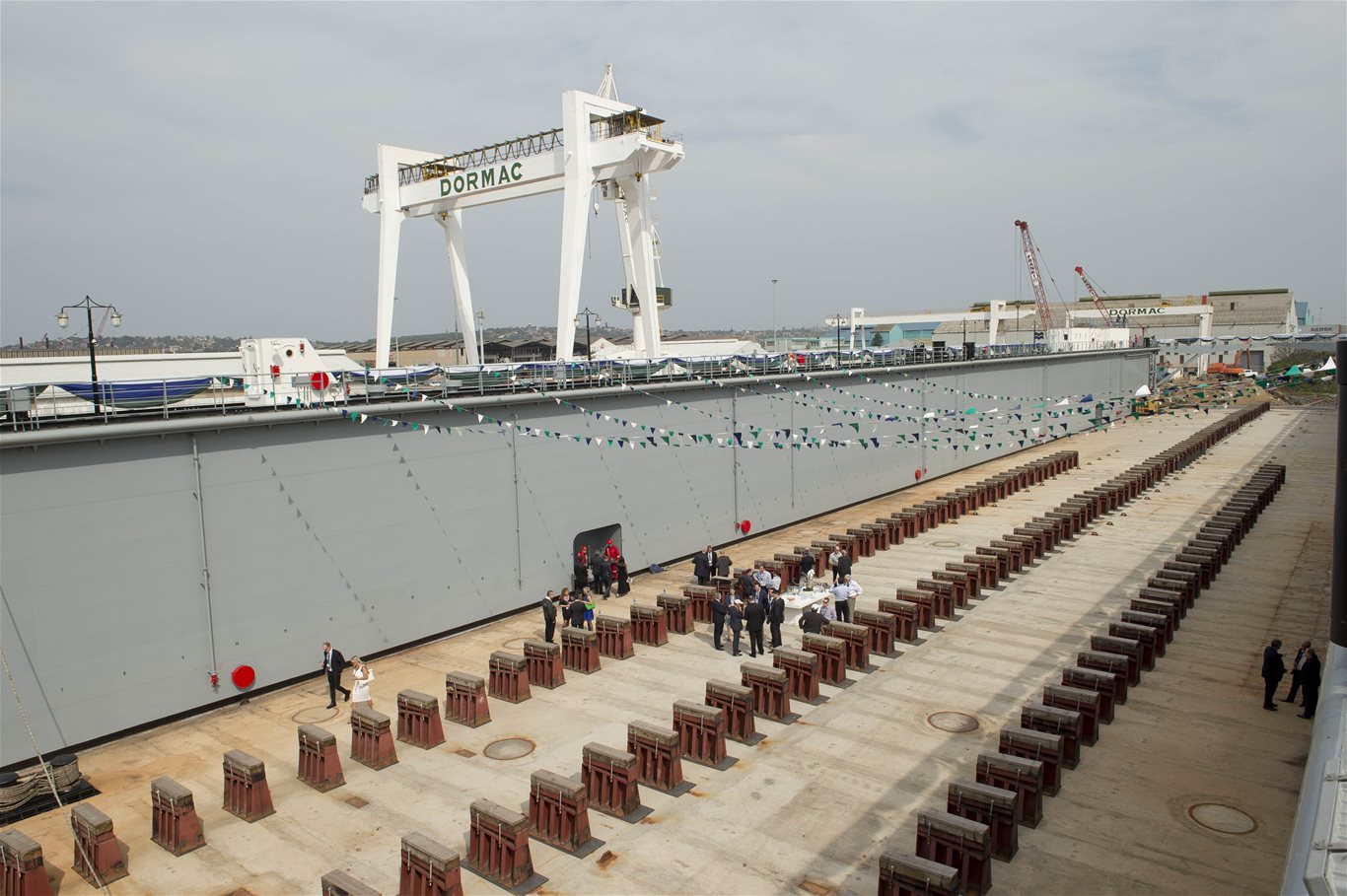
WHAT IS A SHIP NAMING CEREMONY?
Ceremonial ship launching dates back thousands of years and is observed as a public celebration and a solemn blessing. Dormac 1 was launched at a ceremony at the Pallada Shipyard in the Ukraine on the 28th of April 2016, with Ukrainian President, Petro Poroshenko in attendance.
As Dormac 1 is officially registered as a marine vessel, tradition dictates that it should undergo a traditional naming ceremony. While a naming ceremony normally coincides with the ship launching Dormac decided to name the dock once it had reached its home in the Port of Durban.
A ‘Naming Ceremony’ is usually done by a woman who is associated with the owners. The ceremony entails the smashing of the bottle of champagne against the hull of the vessel and saying the ship’s name out loud. A priest performs a blessing and the entire christening ritual is intended to invite good luck and precede the festivities to follow.
WHY WASN’T THE DOCK BUILT IN SOUTH AFRICA?
Ferro concrete docks require a particular design and construction methodology to fabricate. There is no doubt that Dormac could have fabricated a steel floating dock – but these docks are subject to highly corrosive conditions in seawater and require docking every 5 years. This would have required the dock to be towed to Cape Town – the only dock in South Africa wide enough to accommodate a vessel of this size.
Concrete docks are designed specifically for the harsh tow conditions where steel docks are renowned for breaking up on these long voyages. They also require zero maintenance on the pontoon deck that could otherwise cost millions annually to maintain if it were steel. As a result of these factors, it was decided that the concrete dock design was ideal.
At this stage, South Africa does not have the technology to be able to manufacture ferro concrete docks so Dormac looked outside of the country for a solution. Pallada are the only remaining, known ferro concrete dock manufacturers in the world, with some ferro concrete docks that have been in operation for over70 years.
Naming ceremony for DORMAC’s new ship repair floating dock https://t.co/x0vzugeARn @the_dti #Dormac pic.twitter.com/kgjM7ru53s
— Arrive Alive (@_ArriveAlive) September 4, 2016
Related Posts
« Collision at intersection of Commercial and Loop Streets in Pietermaritzburg leaves 3 injured Driver injured in serious collision on the M1 South at the Grayston offramp, in Wynberg. »
